Releasing just prior to the PlayStation 5 Pro hardware launch, Call of Duty: Black Ops 6 features a set of unique enhancements over base PS5 – where we have equally unique insights thanks to a recent trip to meet the series’ Principal Rendering Engineer, Michal Drobot, and the talented team at Infinity Ward Poland. Black Ops 6 is developed by multiple studios – chiefly Treyarch and Raven Software – but at IW’s Poland office I was able to get a behind-the-scenes tour of the tools used to make the game. So in essence, this piece serves two purposes: to discuss the Pro upgrades with input from the developers – and to talk about some of the wider enhancements made to the engine.
PlayStation 5 Pro’s update has been out in the wild for a good month already, and it’s clear that Black Ops 6’s upgrades run deeper than most. Some tweaks are subtle, while others make a more evident difference to frame-rate performance. In summary, PS5 Pro users get improved visual settings while running at 60Hz, plus the adoption of PSSR to boost image quality with 4K as the target output. An anti-lag VRR feature is also added only on PS5 Pro – letting us run at above 60fps while using that default graphics mode. Beyond that, there’s a broad performance boost with the 120Hz mode enabled, where PS5 Pro reverts to base PS5 visual settings to deliver a higher frame-rate.
Starting with the 60Hz mode, there are four improved visual settings, starting with a 2-4x increase in shadow resolution, depending on the shadow type and your distance to it. This primarily affects environmental shadow maps, where quality is boosted across near and far shadows streaking across walls. The improvement is a subtle, but often welcome reduction in stair-stepping across hard shadow lines. Next along, and more remarkably, there’s the improved global illumination. Specifically, a screen-space GI method is added just for PS5 Pro, simulating light bounce between surfaces. Again it’s subtle in some areas – and demands switching between base PS5 and Pro in full screen to truly appreciate – but the pay-off is a much more accurate light interaction between a character and nearby, brightly lit surface.
This SSGI setting is something the team is especially proud of, as a rasterised technique that attempts to mimic the quality of path tracing. It’s calibrated to create as comparable a result to the team’s internal, path traced reference, though obviously at a fraction of the cost. This also extends to the way ambient shade is implemented. With the improved SSAO on Pro, there’s a richer bed of shade added to the scene – and most interior shots like the headquarters – creating a more life-like final frame.
Screen-space reflections – SSR – are also improved pm Pro, where the ambition is to once again match the team’s internal, path-traced reference as closely as possible. In comparing it with base PS5, the main difference on Pro is in the accuracy of how reflections are occluded by objects in the scene. Switching back and forth on the Skyline map, PS5 Pro greatly reduces the ‘light leak’ around geometry – walls, tables – thanks to the updated SSGI, all of which has a domino effect in the accuracy of the reflection as well. Everything combined, we get a change that might not scream at you in the heat of Black Ops 6’s rapid action, but it does make a sensible use of Sony’s mid-gen machine to refine the game’s visuals.
The other big change for PS5 Pro is the move to its native upscaler: PlayStation Spectral Super Resolution. PSSR only engages in the default 60fps mode, and in terms of the raw metrics, runs at 2560×1440 internally, before being upscaled to 4K. This is a dynamic resolution too, with adjustments made horizontally to 1280×1440 lowest in more extreme cases, to keep a stable frame-rate. In terms of the perceptual pay-off, the result is a clean one, but also at times more artefact-prone than engine’s own custom TAA – as still used on base PS5. There are teething issues, where PSSR introduces white, flickering pixels in very specific scenes. This noise tends to appear more-so in darkened, shaded areas. And in comparing the presentation of ultra fine detail – like cloth – there is also a slight smearing to the result next to the TAA on base PS5.
Speaking to Michal Drobot directly, he confirms a fix is already in the pipeline for these PSSR artefacts – one that should roll out soon once the relevant patch passes through QA. The cause, it turns out, is simply down to PSSR not being fine-tuned for denoising the image in its current state. The team’s own TAA still has its advantages here: it’s substantially faster for a start. Plus, the team’s own TAA is custom-tailored for denoising the specific type of output this engine generates. PSSR, it seems, works well in anti-aliasing the image, but less so in denoising the flicker created by the game’s shadows, variable rate shading, and especially its SSR.
Thankfully PSSR still works well in most scenes with the software-based variable rate shading in place. For every group of pixels the game can render at full, half, a third, or quarter resolution. Edges or hard points in geometry are rendered at full res, for example. A form of foveated rendering is in place here too, putting a priority on details at the screen’s centre, while there is a fall-off in quality towards the edges, or flatter, simpler surfaces. VRS only just made the cut five days before Black Ops 6 released, I’m told, and it does ultimately help squeeze the best results from each frame – while boosting performance.
Speaking of which, in terms of frame-rate testing on Pro hardware, the result is a good one. Black Ops 6 already ran optimally at 60fps on base PS5 in the campaign mode, and despite PS5 Pro’s visual upgrades to SSGI, SSR, AO and shadows – and the taxing PSSR upscale – we maintain a 60fps lock here. The good news is, no mission goes below the mark based on my testing. That being said, there’s one way to stress test base PS5 – to force a repeatable drop – in the form of its split-screen mode. Using the Derelict multiplayer map, and fixing a second player’s viewpoint across the action, base PS5 suffers constant drops to the 50fps line. Switching to PS5 Pro in the same spot, though – and keeping that second player view in the same position – we’re now almost entirely at the 60fps line, barring a few single dropped frames. In other words, we get the visual improvements, and where the GPU is stressed, Pro is also able to hand in better performance.
There’s one other technical advance for PS5 Pro, in the form of an ‘anti-lag’ VRR technology on this 60fps mode. This engages so long as you have a 120Hz VRR display connected, but specifically keep the 120Hz mode disabled in the game menu. Developed in conjunction with Sony, an extra API call is made on PS5 Pro this way, to predict the upcoming frame-time. In this case, rather than VRR being used to hide drops under 60fps – as is common in so many games – Black Ops 6’s VRR is instead used to render frames faster, and go above 60fps where there’s budget for it. This is achieved through logical prediction. Based on multiple previous frames, the engine is essentially able to recognise where there’s ‘slop’ – or, a dependable chunk of frame-time that is repeatedly not being used within a 16.7ms budget for 60fps. And by using that slop, it’s able to generate a frame earlier, decreasing latency in the process, from the controller input to a displayed frame.
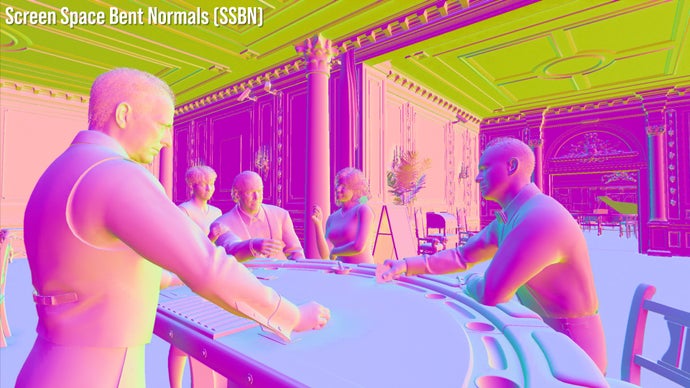
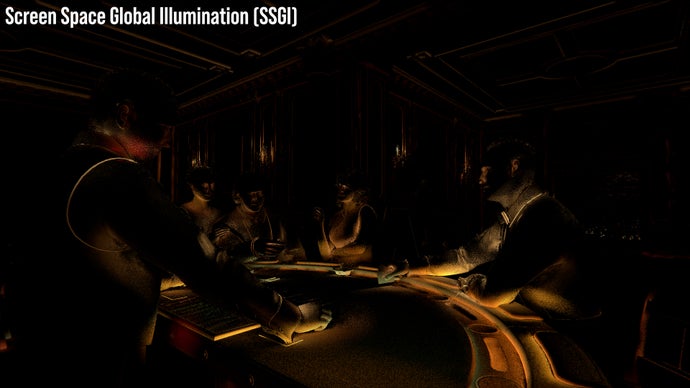
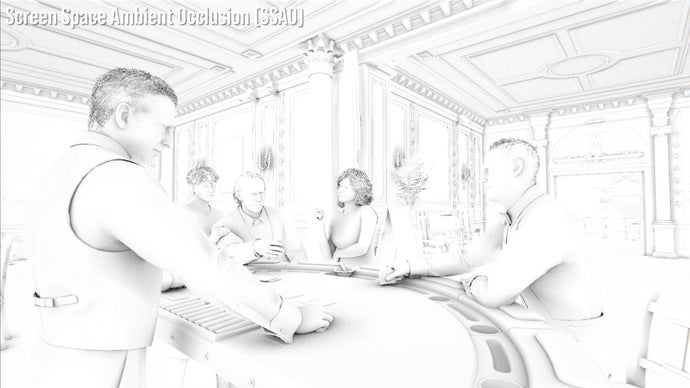
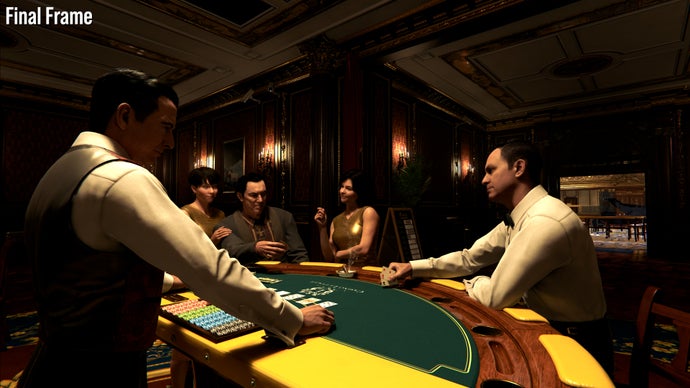
The result is more frames per second than would otherwise be possible. In most scenarios on my own VRR display, frames are actually output at anywhere between 60-120fps, but typically performance hangs between 80-90fps during the opening mission. Only one major drop, briefly under 60fps, is recorded while exploding a planted C4 on the open world missions. Beyond this, the VRR mode genuinely works, and the team claim it to be more responsive than running the game unlocked with the game’s actual 120Hz output mode active.
The actual 120Hz mode on PS5 Pro, conversely, removes all of the new features: the visual upgrades, the PSSR, and also that anti-lag VRR technology. In its place, Pro hardware instead runs at 1440p internally with the team’s in-house TAA, using the same quality settings as base PS5’s 60Hz mode. In direct comparison between base and Pro consoles, we’re seeing an uptick in performance by as much as 35 percent here too. Spots where the game suffered from dips to 95fps previously, like the initial walk forward on the first mission, now run at mostly 120fps. We do not have a perfect lock on PS5 Pro however – and drops to 100fps are still very possible – but the margin is tightened now.
As an aside, the reason PSSR is unused here it seems is in part the frame-time cost: it takes up 2.1ms of the frame-time, which in its current form is too great a chunk of the required 8.3ms frame-time required to run at 120fps. Later, improved versions of PSSR might speed this up, but for now the TAA is better suited for 120Hz. In a similar vein, I’m told the idea of using PSSR to allow for a theoretical 8K resolution mode in Black Ops 6 poses a similar challenge. In short, an 8K frame is four times the pixel output of a 4K one, which for PSSR’s reconstruction, equates to a four times increase in the frame-time cost.
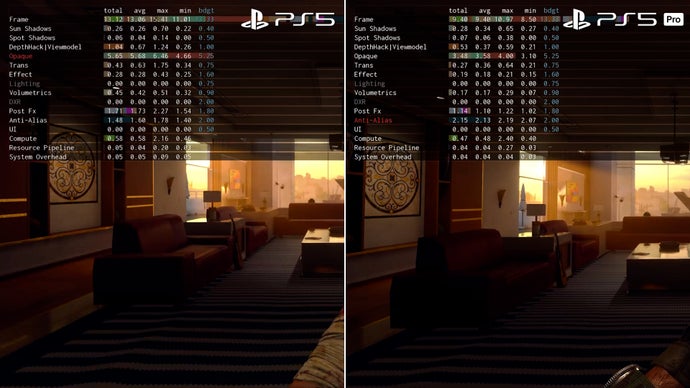
Beyond PS5 Pro, there are a great many new engine features making a debut in Black Ops 6. To demonstrate each, Michal booted up a so-called ‘white room’, a neatly labeled test suite that lets us see each aspect of the engine running in isolation. From material lighting to volumetric fog, particle effects, or terrain streaming – all parts of Call of Duty’s tech has its own small torture chamber. It presents as a science experiment in this way; a means for the development team to zero in on new technologies, for Black Ops 6 and beyond, before they actually ship.
Among the many new additions to the game is weather grade volumes – or WGVs. In a nutshell, WGVs allow mud, water, oil, or snow to leave a persistent mark on a player’s body – with only the specific body part coming into contact being affected. It’s best shown off in third person view, though in practise you’ll see it on enemies during gameplay. One great dev footage example sent by the team has a player stood next to a 4×4 vehicle; the acceleration of the rear wheels causes mud to spray upwards, where the momentum of the car, and the velocity of the spray is simulated by large spherical volumes. These WGVs constantly adjust and change based on the position, and then, to measure the point of that mud’s impact on the player, a 3D voxel-based system is used on the player.
An grid of voxels cover the player rig with each one individually triggering based on contact with mud, water or snow. It’s a way to sample the impact of effects, or even weather conditions. Put in our own example, looking at the oil fires of mission one, the way oil droplets build up on our fatigues adds a note of realism – while in multiplayer it gives a hint as to where the enemy player has last been.
Attribution
Another highlight of recent games is the handling of terrain, which breaks down into multiple layers. First we have the virtual texturing system – or ‘super terrain’. This was debuted in Warzone, and fine tuned in 2021’s Vanguard, allowing a giant, detailed texture map to be generated procedurally ahead of the player. We’re talking virtual acres of landscape that adjusts its detail based on proximity and player view. This is helpfully put in example using the dev tools, which show how the overall texture map is filled out in tiles – crucially helping to manage system memory.
Next, running on top of that, is the grass. For Call of Duty, the presentation of grass across multiple consoles is carefully balanced – to ensure visibility stays the same for online, cross-gen matchmaking. Density and draw distance are matched to avoid a competitive advantage for any player – and, you’ll notice, rather than grass blades popping in abruptly, they are in fact simply lowered beneath the ground to ease the transition.
Rounding out, there’s the deformable terrain. The campaign modes of recent Call of Duty titles include clutter, or deformable grass, which leaves a trail as you crawl through. It’s perhaps best shown off in the white room footage, in a unique ‘vertex deform’ area that lets the player paint their route through a small garden patch. Likewise, we have deformable snow for levels that need it – achieved via tessellation.
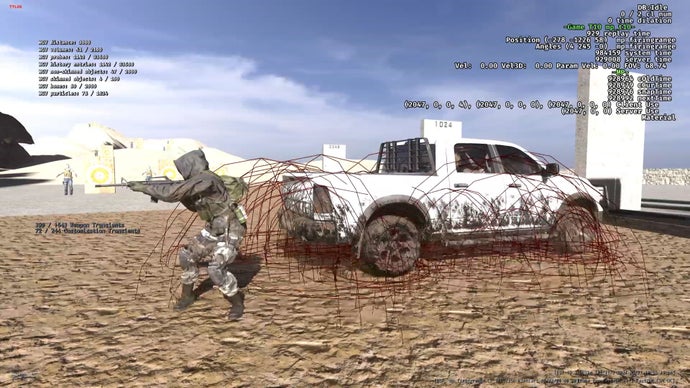
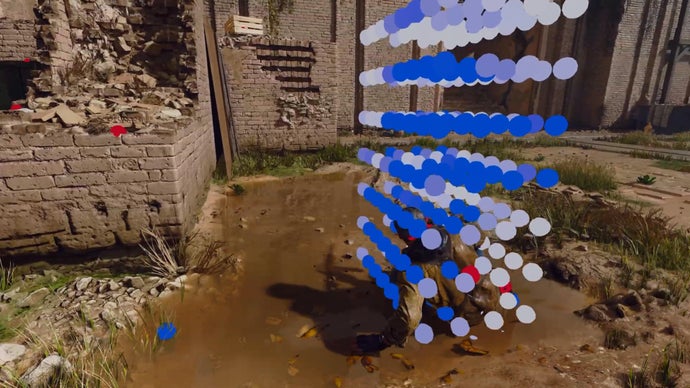
It’s another tool in the box for developers to use. Again vertex deformation is a relatively new feature for the series, letting thick layers of snow capture player movement at a high resolution – the result being a persistent trail. All of this helps players leave a tangible mark on the world, especially in the campaign. Last but not least, we have the addition of advanced glass. This is used even across Black Ops 6’s multiplayer maps today, to simulate the gradual fracturing and structural breakdown of a glass pane. The integrity of the glass breaks down with each shot, which even factors in the glass pane’s thickness, while lighting from behind the glass is realistically simulated as it hits the pane.
The number of additions made to the series, and Black Ops 6 especially, are too numerous to fully cover here. There are improvements to the game’s fog effect – with screen-space fog gathering used more extensively across each map, after being introduced in Modern Warfare 3. There are also improvements to water caustic simulation – in select moments – adding reflections and refractions from the lit water surface. All of these points are huge labours of love for the team, and given the rapid nature of the series’ action, don’t always get the credit they deserve – the key takeaway being that every Call of Duty title pushes the technical envelope in myriad ways.
Black Ops 6 continues that evolution, in some respects building on the technologies and ideas in Vanguard, Warzone, and Modern Warfare 3, while also pioneering new ones. With the launch of PS5 Pro in particular though, the team seized a chance to add some new features: the anti-lag VRR mode, the adoption of PSSR, the improved global illumination and reflections. It’s a culmination of years of work, where PS5 Pro is powerful enough to at last facilitate each feature in the console space.
